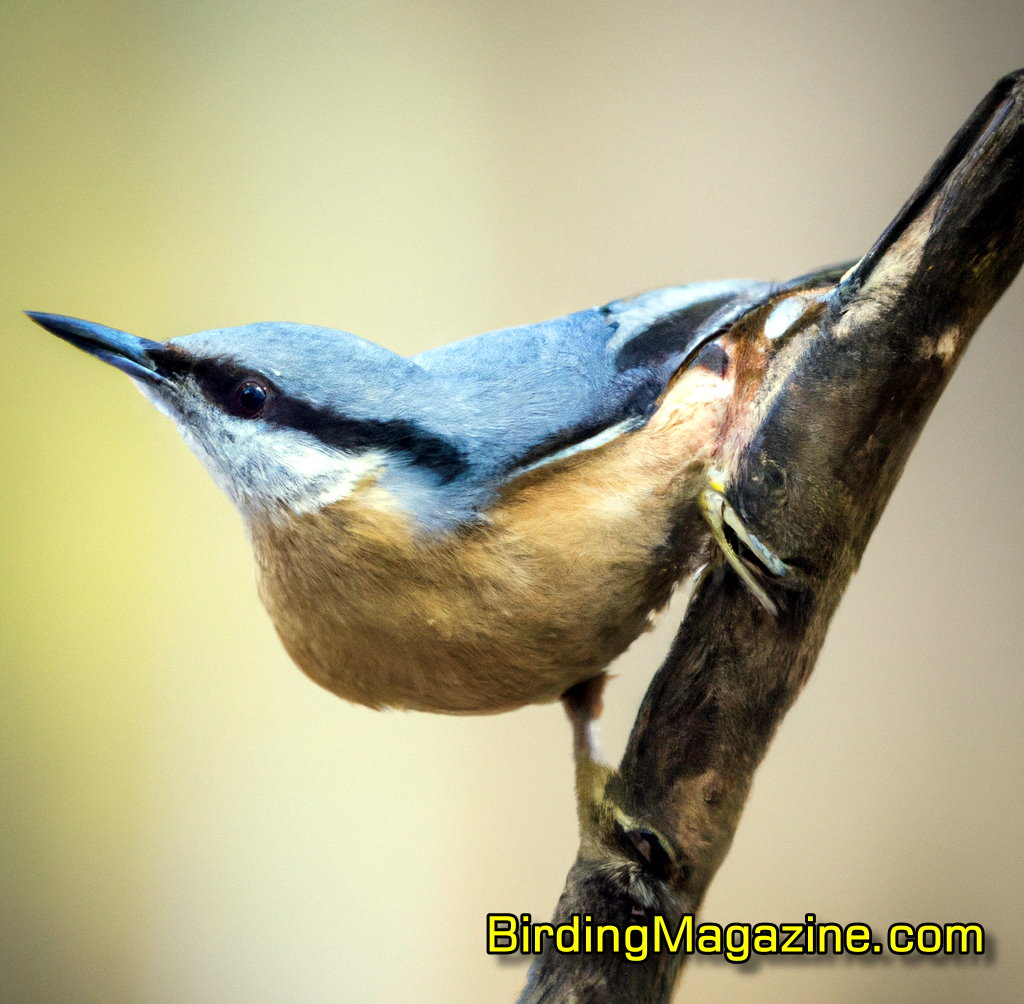The Eurasian Nuthatch (Sitta Europaea) is a captivating and charismatic bird species that enchants birdwatchers and nature enthusiasts alike. With its distinctive appearance, acrobatic foraging behavior, and enchanting vocalizations, the Nuthatch holds a special place in the avian world.
In this comprehensive article, we delve into the fascinating world of the Eurasian Nuthatch, exploring its physical characteristics, range, habitats, feeding habits, mating behavior, nesting habits, and more. Join us as we unravel the secrets of this remarkable bird, uncovering the beauty and wonder of the Eurasian Nuthatch.
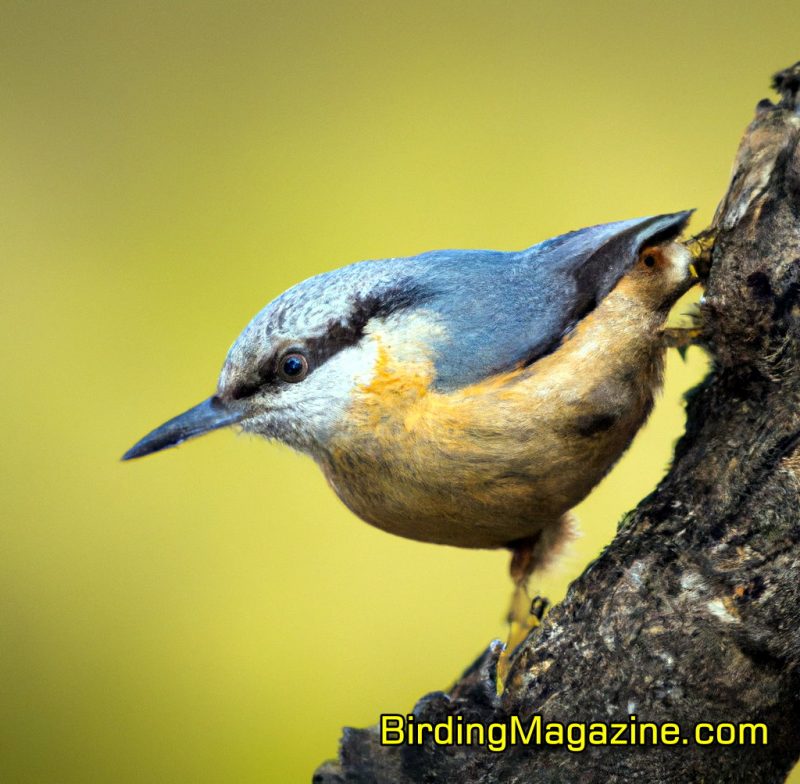
Description: How to Identify
The Eurasian Nuthatch (Sitta Europaea) is a small passerine bird with a distinctive appearance. It measures approximately 14 centimeters in length and has a compact, stocky body. The upperparts of the Nuthatch are bluish-gray, while the underparts exhibit a chestnut coloration. Its head is adorned with a black stripe extending through the eye, creating a distinctive “bandit mask” effect. The Nuthatch features a short tail, strong legs, and a powerful beak perfectly suited for its feeding habits.
Differences Between Males and Females: How to Distinguish
Males and females of the Eurasian Nuthatch share a similar appearance, making it challenging to distinguish between the sexes based on physical characteristics alone. Both genders exhibit similar plumage and markings, making it challenging to distinguish them solely based on their physical attributes.
Range: Where it Naturally Exists
The Eurasian Nuthatch is native to a vast range encompassing Europe, Asia, and parts of North Africa. Its natural range spans from western Europe, including the British Isles, to eastern Siberia and parts of China.
Within this range, the Eurasian Nuthatch inhabits various countries, including France, Germany, Russia, and Japan, among others.
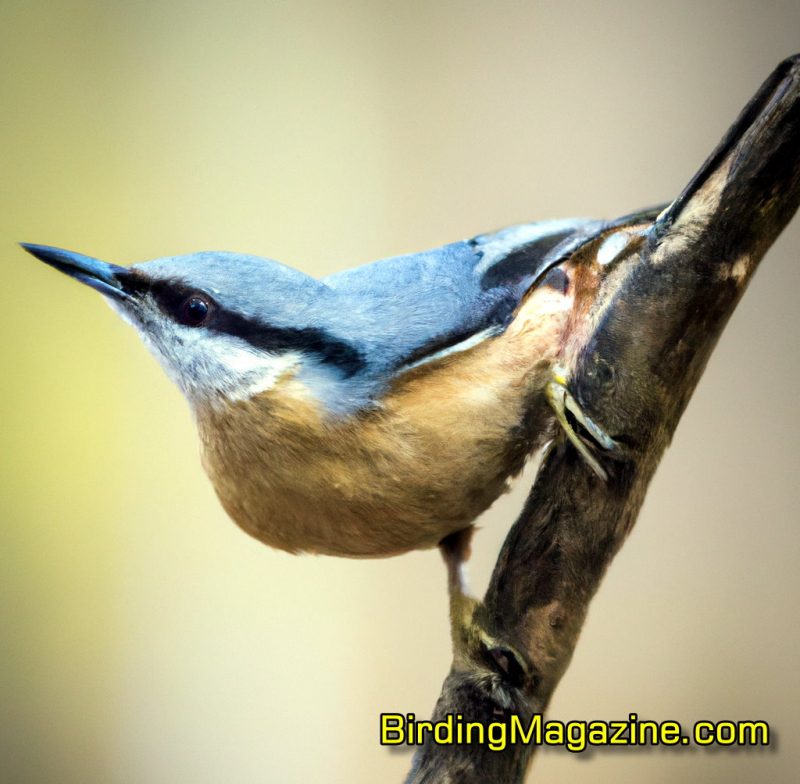
Habitats: Where It Tends to Live
This adaptable bird species is commonly found in deciduous and mixed forests, as well as woodland areas with mature trees. The Eurasian Nuthatch displays a preference for habitats rich in broad-leaved trees, such as oak, beech, and chestnut. It can also be observed in parks, gardens, and urban areas that provide suitable nesting sites and a steady food supply.
Feeding: What It Eats
The Eurasian Nuthatch is primarily insectivorous, with a diet that includes various insects, spiders, and their larvae. It is known for its unique feeding behavior, often observed hopping headfirst down tree trunks or clinging to branches while foraging. In addition to insects, Nuthatches consume seeds, nuts, and occasionally berries, especially during the winter months when insect availability decreases. They are known to stash food items in crevices or tree bark for later consumption.
Mating: How It Looks for a Mate
During the breeding season, male Eurasian Nuthatches establish and defend territories to attract mates. They engage in courtship displays, which involve the male performing acrobatic movements and vocalizations to impress females. The male will also bring food offerings to the female as part of the courtship ritual. Once a pair bond is formed, they typically mate for life.
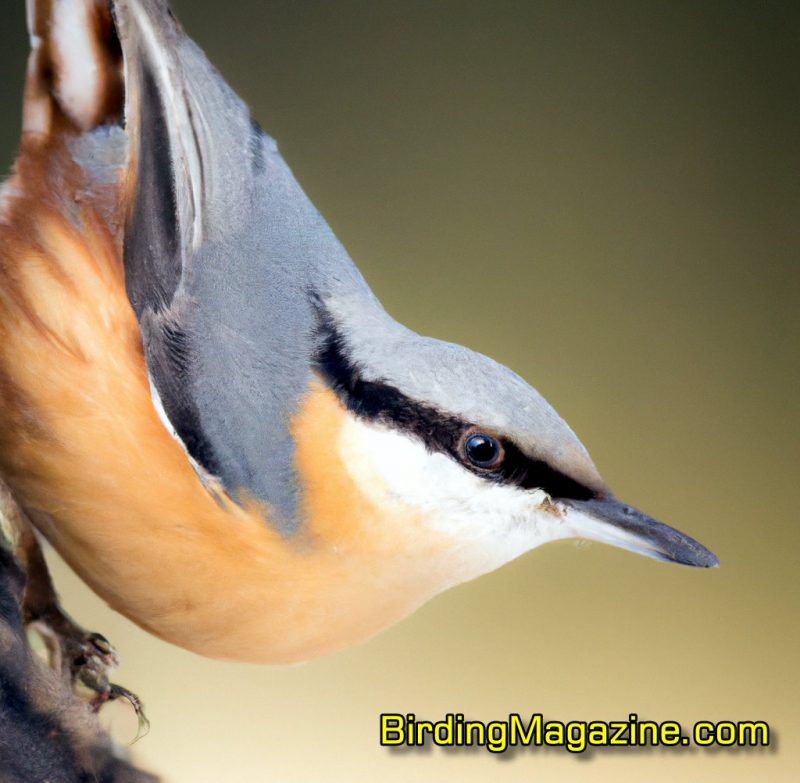
Nesting: How and Where it Builds Nests
The Eurasian Nuthatch constructs its nest in tree cavities, often utilizing old woodpecker holes or natural crevices in tree trunks. They are also known to excavate their nest cavities in decaying wood or even use nest boxes provided by humans. The female Nuthatch takes the primary responsibility for nest construction, using mud, moss, bark, and other natural materials to create a cup-shaped structure within the chosen cavity.
Eggs: How Many Eggs It Lays, What They Look Like and Who Looks After Them
A typical clutch of Eurasian Nuthatch eggs consists of 6 to 9 eggs, which are creamy-white in color with fine reddish-brown speckles. The female incubates the eggs for approximately 16 to 18 days while the male assists by providing food for her during this period. Once hatched, both parents participate in feeding and caring for the chicks.
Fledglings: How They Differ from Adults and How Long It Takes Them to Learn the Skills
After hatching, the nestlings are initially naked and helpless, relying entirely on their parents for warmth and food. As they grow, they develop a layer of downy feathers, gradually acquiring the coloration and patterns of adult plumage. Fledglings resemble adult Nuthatches but may have slightly duller colors. They remain with their parents for a few weeks, learning essential skills such as foraging techniques and navigation before becoming independent.
Song and Call: Describe What They Sound Like
The Eurasian Nuthatch produces a variety of vocalizations, including a distinctive “ti-ti-ti-ti” song that is repeated rapidly. Another characteristic is a repeated “piu-piu-piu” or “tee-tee-tee” sound. These are often described as resembling a tin whistle. The call notes of the Nuthatch include a short “tuit-tuit” or “wit-wit” sound, which they use for communication and maintaining contact with their mate or offspring.
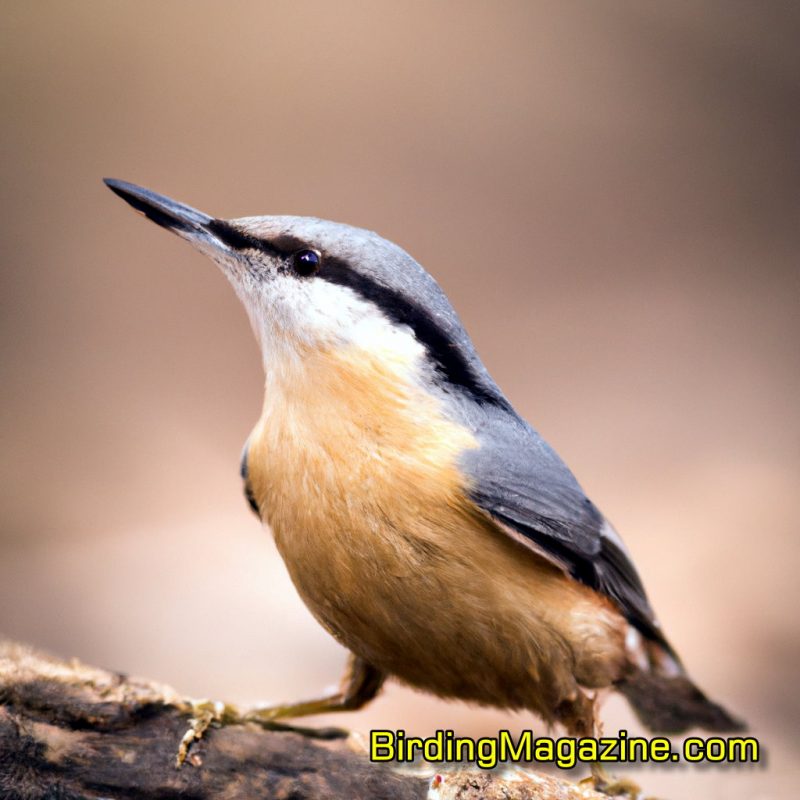
Predators: Who Are the Greatest Threats
The Eurasian Nuthatch faces predation from various predators, including birds of prey such as owls, hawks, and sparrowhawks. Nestlings and eggs are particularly vulnerable to predation by squirrels, snakes, and small mammals. In addition to natural predators, habitat loss and fragmentation pose significant threats to their population.
Conservation Status
The Eurasian Nuthatch has a stable population and is not currently considered globally threatened. For this reason, it is classified as a species of “Least Concern” on the IUCN Red List. Its wide distribution, adaptability to various habitats are contributing factors to its current conservation status. However, ongoing conservation efforts are necessary to ensure the preservation of suitable habitats and maintain healthy populations of this charismatic bird.
Similar Species
The Eurasian Nuthatch shares certain characteristics with other species within the same family, such as the Red-breasted Nuthatch (Sitta canadensis) found in North America. It can also resemble other tree-climbing birds like the Treecreepers (Certhia spp.) and some small woodpeckers. However, careful observation of plumage patterns, vocalizations, and feeding behaviors can help distinguish the Eurasian Nuthatch from these similar species.
Conclusion:
The Eurasian Nuthatch, with its mesmerizing appearance and unique behaviors, is a true jewel of the avian world. From its bluish-gray upperparts to its chestnut underparts, as well as its acrobatic foraging techniques, this bird captivates us with its charm and resilience.
We have journeyed through the forests and woodlands, exploring the Nuthatch’s feeding habits, mating rituals, nesting behaviors, and the challenges it faces from predators.
While the Nuthatch’s population remains stable, continued conservation efforts are essential to ensure the preservation of its natural habitats and the protection of its future.
By understanding and appreciating the beauty and ecological significance of birds like the Eurasian Nuthatch, we can foster a deeper connection with the natural world and inspire conservation actions.
As we celebrate the Eurasian Nuthatch, let us embrace the beauty of nature and commit ourselves to safeguarding these precious creatures for generations to come.
